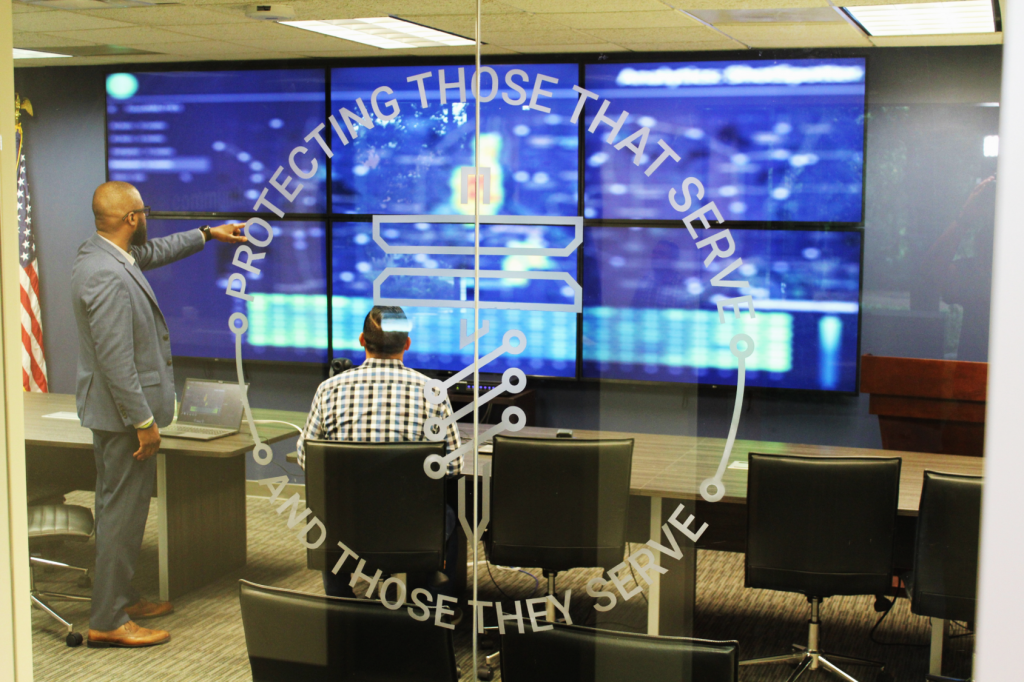
Features
Technology
The future of policing technology
September 30, 2021 By Hilary Rodela
 Credit: Fusus RTCC Analytics
Credit: Fusus RTCC Analytics Police today need all available tools in order to keep their communities safe. Technology has advanced to meet this need. One type of software allows officers to track and “predict” where and which crimes are most common in their region, which allows them to patrol those areas much more effectively.
The technology
Real-Time Crime Center technology has evolved substantially over the last decade. The purpose of this particular type of technology is to input data collected from the Computer-Aided Dispatch (CAD) system, police shifts and other data like live video and gunfire detection into a system which maps out and calculates which areas of a region may need immediate response or more patrol presence. This not only promotes community safety, but allows detectives to utilize data to find potential leads in cases.
Other types of technology also allow law enforcement to watch and conduct surveillance in real-time. This may be used for everyday purposes in a heavy crime area or for undercover purposes, or even for security at large events held in a community.
Fusus, the most widely used RTCC platform, has developed this type of technology and has taken it a step further as their Real-Time Crime Center in the Cloud brings various forms of information all into one place, which enhances its use for intelligence purposes. Their mission is to enable law enforcement agencies to work more closely with community members and businesses to mitigate and investigate criminal activity, break down silos and unify security infrastructure and resources.
“Fusus enables community members and businesses to easily share information with law enforcement agencies and each other, in order to mitigate criminal activity and increase physical safety,” said Sahil Merchant, chief strategy officer at Fusus. “Our open platform fuses existing security infrastructure, like security cameras, gunfire detectors, license plate readers and panic alarms, into a single pane of glass.”
By creating a common operating picture and better situational awareness, Merchant said police officers are able to work more directly with community members.
“A digital evidence vault, camera registry, multi-media tips line, community messaging and live panic alerts help increase community engagement as well, giving individuals a stake in their own safety.”
The future of policing
Fusus technology allows any type of device, whether it be a drone, traffic enforcement cameras, phones or other forms of loT and public safety-oriented devices to capture and transmit data about events in real time. By integrating all of this security infrastructure in a secure cloud, Fusus has been able to make a real-time crime center affordable for most agencies, who can access this information for the purpose of public safety.
“The ability to have situational awareness that is in real time is a game changer for police officers and the communities they serve.”
The technology may be incorporated into other software systems an agency may already have in place, such as their CAD system, gunfire detection software as well as other forms of real-time security monitoring.
Community and solidarity
No community can function well without police, but it is equally important for police to have a good relationship with their respective communities.
“Police need a good relationship with their community to effectively enforce the law,” said Officer Rodela of the Ruidoso Police Department. “Community members must be able to rely on Law Enforcement to respond to complaints in a timely and effective manner. Equally, Law Enforcement must be able to trust community members will contact them when a crime is committed.”
It is a team effort put forth by both parties and technologies such as Fusus helps to bring that partnership together.
“Predictive policing software can tell officers what areas they need to focus patrols and enforcement,” said Officer Brendan Rodela. “This will increase effectiveness and create safer communities by stopping and preventing crime.”
Coming together
When a department implements a live stream video security network into their community, they bring forth a new and much more connected version of public safety. This is because with this system in place, police can be more aware of situations and high crime areas, which in turn they can have more of a presence within their communities and as a result bring more safety to civilians.
The ability to have situational awareness that is in real time is a game changer for police officers and the communities they serve.
Hilary Rodela is a licensed private investigator through the state of New Mexico, a former evidence technician and crime scene investigator. She has worked for the Ruidoso Police Department and the Lubbock Police Department.
Print this page